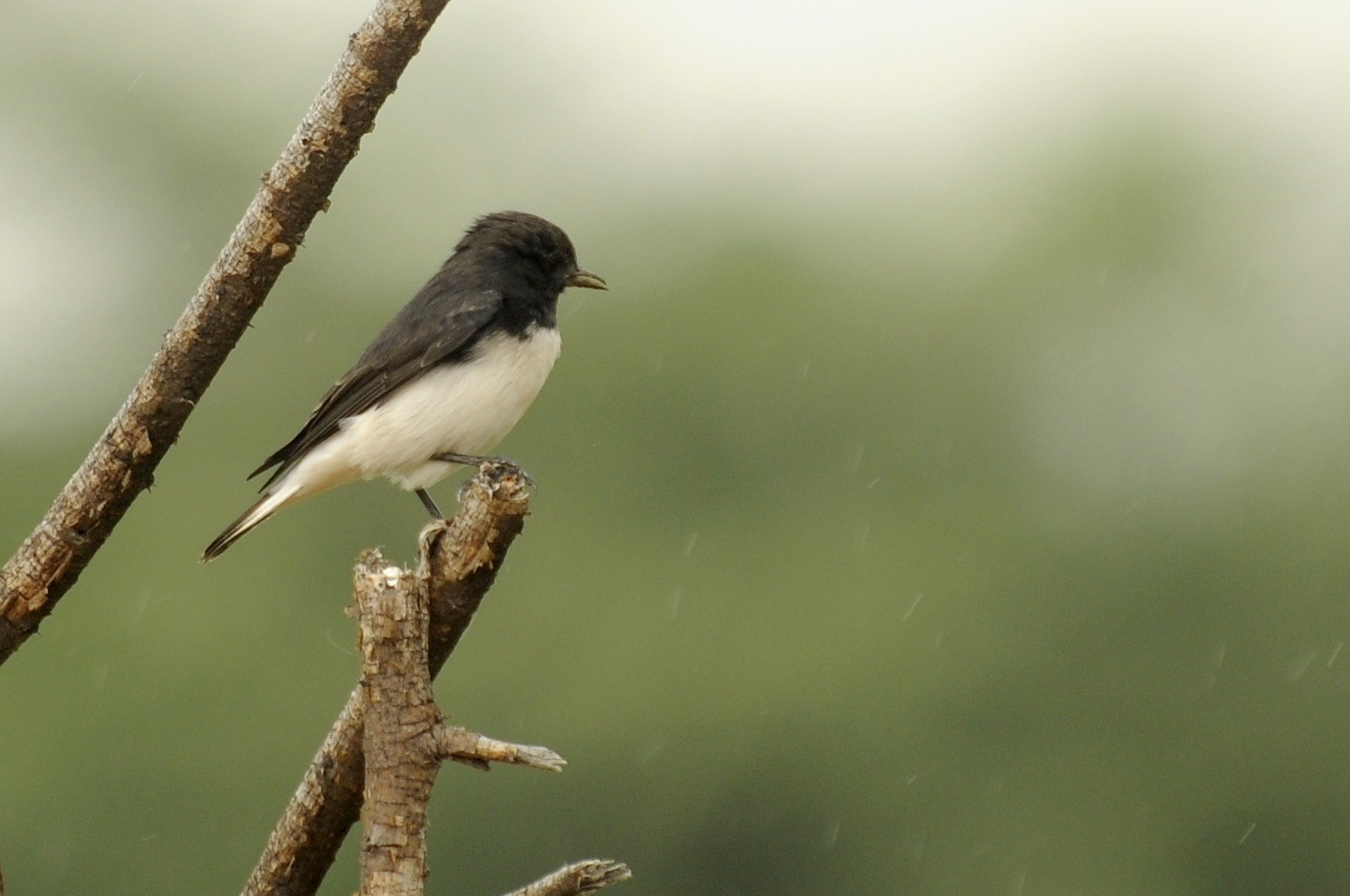Variable Wheatear
A species of Wheatears Scientific name : Oenanthe picata Genus : Wheatears
Variable Wheatear, A species of Wheatears
Botanical name: Oenanthe picata
Genus: Wheatears
Content
Description General Info
 Photo By T. R. Shankar Raman , used under CC-BY-SA-4.0 /Cropped and compressed from original
Photo By T. R. Shankar Raman , used under CC-BY-SA-4.0 /Cropped and compressed from original Description
The variable wheatear is a bird of arid and semi-arid region, and is locally abundant in barren rocky areas, sand dunes with scrub vegetation, cultivation, ravines, outside villages and nomadic encampments. It is polymorphic and has three distinct morphs. Black-bellied phase ('opistholeuca'). Male (adult). Entirely jet black except rump, under tail-coverts, base and sides of tail which are white; central rectrices and terminal band of tail black. Female has black parts replaced by sooty black. White-bellied phase ('picata') Male (adult). Like the preceding but belly white. Female similar to male but black parts replaced by grayish brown; belly more buffish. White-crowned phase ('capistrata'). Male (adult). Like picata, with white belly and black throat, but crown and nape white. Female similar to male but black parts and crown earthy brown; belly more buffish. The geographical dominance of the three types of females does not exactly correspond to the dominances of the three color phases of the males, but in their wintering grounds there is some corresponding separation. 
Size
15 cm
Nest Placement
Ground
Feeding Habits
Variable Wheatear predominantly feeds on small insects like ants, beetles, flies, grasshoppers, and moths, including hawkmoths. Occasionally, variable Wheatear consumes fruits and berries. Variable Wheatear hunts actively on the ground, in the air, and from perches, sometimes bringing caterpillars to its nestlings.
Habitat
The variable Wheatear's natural habitat spans arid and semi-arid regions, including low mountain terrains, grassy deserts, and stony landscapes. It is found from sea level to high elevations, up to 2400 meters, typically inhabiting montane areas during the breeding season and semi-deserts or areas near human settlements in the off-season. Its range extends across southwest and central Asia, demonstrating adaptability to diverse topographies.
Dite type
Insectivorous
General Info
Feeding Habits
Bird food type
Distribution Area
This species is found in northeast and southeast Iran and Turkmenistan eastern to western Tien Shan, Pamirs, and northern and western Pakistan; non-breeding in southwest Asia. Common and generally distributed in winter in Pakistan and northwestern India southeast to Delhi, central Madhya Pradesh and northern Maharashtra (Khandesh). Arrives on breeding grounds in March (Baluchistan) or mid April (Chitral), remains till September. May be seen in winter quarters from the beginning of August (Karachi dist) till the end of March. In winter frequents stony semi-desert, and desert with sparsely scrubbed sand dunes, cultivation, ravines, outskirts of villages and nomadic encampments, cattle corrals, etc.; usually from almost sea level to c. 1200 m, but has been observed also at 2700 m in deep snow. 
Species Status
Not globally threatened.
Scientific Classification
Phylum
Chordates Class
Birds Order
Perching birds Family
Old world flycatchers Genus
Wheatears Species
Variable Wheatear